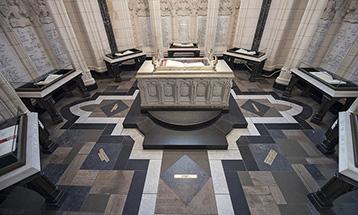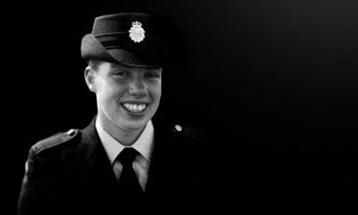Widely known as a hub of industry, Oshawa, Ontario became one of the busiest sites for wartime manufacturing in our country. What many Canadians may not know is that a nearby training base focused on a much different kind of war effort. In the final part of our three-part Hometown Service series, we explore how Oshawa contributed during times of war.
A growing industrial city
Oshawa’s manufacturing industry was in its infancy during the First World War. In 1918, the General Motors Canada truck factory opened in downtown Oshawa to build ambulances for the war effort. This same factory went on to be a staple of the city’s economy for more than 90 years until it closed in 2009.
By 1939 and the start of the Second World War, more factories opened in Oshawa, bringing increased capacity and work to the city. By 1942, General Motors Canada had converted all of its automotive factories across the country to produce military vehicles and armaments for the Allies. Oshawa’s plants in particular produced a newly designed heavy utility truck, as well as armoured reconnaissance cars and other specialty vehicles.
Workers were in heavy demand. Over the course of the war, stories ran frequently in newspapers calling for skilled and unskilled labour to head to Oshawa. Unemployment—sometimes an issue in other areas during slower seasons—was extremely low in the city.
Another kind of weapon
Manufacturing was not Oshawa’s only role in the war effort. Though it did not make headlines, a nearby training base helped provide a much different type of support to the Allied military.
Officially known as Special Training School No. 103, the facility had another, more cinematic name: Camp X. According to later declassified records, Camp X was a British paramilitary installation, operated in partnership with the Canadian military, RCMP and Canada’s Foreign Affairs service.
This base trained covert operatives in clandestine operations, such as:
- sabotage and intelligence-gathering techniques,
- explosives,
- communications and radio,
- recruiting and subversion,
- lock-picking,
- and even silent killing and unarmed combat.
The base was so secret that not even Prime Minister William Lyon Mackenzie King knew its full purpose.
We all had a part to play
Every city and every citizen could be called on during times of war. As Oshawa shows, sometimes efforts go unnoticed until many years after peacetime returns.
In the Hometown Service series, Halifax, Montreal and Oshawa took center stage, but the rest of Canada played its part as well. The contributions of everyone—service members, workers and families alike—helped Canada and the Allies to victory during the First and Second World Wars.
Learn more about Canada’s military history and find ways to practice remembrance all year long.
Date published: 2020-02-10




